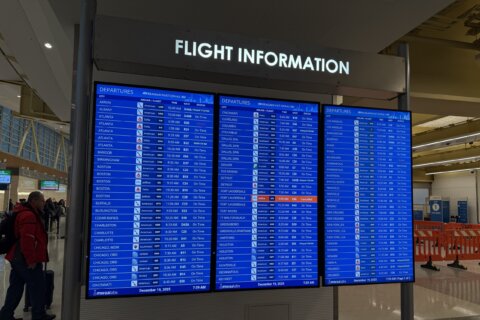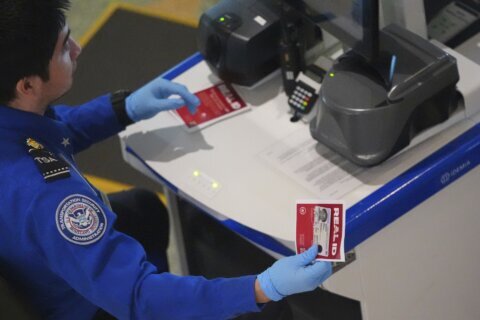The art of determining when to purchase airfare has long puzzled price-sensitive fliers. And it’s no wonder why: With fluctuating prices, it’s hard to know when to buy or delay booking to secure the cheapest tickets.
While some air-travel experts dismiss airfare predictors as an accurate measure of flight pricing trends, innovative apps and tools such as Hopper, Google Flights and Kayak that aim to take the guesswork out of predicting when prices will surge or plummet make it tempting to give this elusive farecasting technology a test run.
[See: 10 Frequent Flier Secrets Every Traveler Should Know.]
So, can these tech-savvy tools precisely predict future airfare pricing? That’s a matter of debate. “No one has done an in-depth study as to whether airfare predictors work,” cautions George Hobica, founder of Airfarewatchdog.com, who’s been following airfare trends for over 20 years. “Remember Farecast?” Hobica asks, recalling the airfare-prediction technology Microsoft bought in 2008. “Microsoft bought [Farecast] for millions and rebranded it as Bing Travel, and promptly shut it down. It stands to reason that if one airfare search engine could accurately predict airfare trends, all the others would have been buried by now,” Hobica explains.
But while contemplating the tools’ price prediction capabilities is one thing, utilizing the complex technology to track fares and smartly assess when to buy or wait to book your plane ticket is another task altogether. With that in mind, U.S. News sought guidance from industry pros and data experts to bring you a primer on using airfare prediction tools to net the best results.
Decide Which Tool Fits Your Needs and Patterns
All of the price prediction tools “work a little differently,” explains Brian Sumers, an airline business reporter at Skift. Tools such as Google Flights and Hopper use historical pricing data along with other metrics to evaluate ticket prices based on the aggregate, he explains. And while flight-predicting apps like Hopper have gained popularity, Sumers says Google Flights is the resource to watch, as Google can utilize its extensive data collection to develop sophisticated algorithms. But remember these sites and apps won’t get it right 100 percent of the time, he cautions. “If you see a price that you think is fair, you should buy it,” Sumers says.
What are the key differences with these tools? Hopper alerts travelers when they should fly and buy based on data-driven research, explains Patrick Surry, Hopper’s chief data scientist. “We use our historical flight price data and our real-time feed of 5 to 8 billion daily flight prices to create trip-specific pricing forecasts up to a year in advance of departure, based on current and historical yield trends as well as pricing volatility,” he explains. According to Surry, the price forecasts are estimated with 95 percent accuracy. And unlike its competitors, Hopper enables users to select the “Watch This Trip” option to track airfares and receive a push notification within a minute if a good deal pops up, Surry adds. “Overall, our users save an average of $150 per year on their air travel using the app,” he says. The only snag: While Hopper analyzes flights from over 250 global airlines, a few airlines are not currently available, including Southwest and Delta.
[See: 9 Tips for Navigating an Outrageously Long Flight Delay.]
Google Flights, on the other hand, doesn’t currently offer an app for snapping up deals on the fly. However, it does offer a few key benefits, including the chance to filter options based on your desired cabin class and number of stops and the ability to track a specific flight. When a ticket price is likely to rise, Google sends a mobile or email notification to its users. What’s more, Google enables users to view the precise price fluctuation in real time, down to the hour, to snag a price that’s likely to rise soon. Online booking site Kayak also tracks billions of price queries to analyze historical pricing and forecast future pricing. While the algorithm only allows users to see whether the price is likely to increase or fall in the next week, Kayak does offer guidance on when to book — or wait — to help travelers know when to purchase to score the best value.
Hedge Your Bets
Flyr, a newer tool in the price-prediction arena, offers guidance on when to book using a different approach. With its FareKeep insurance product (available for a small fee), which analyzes the volatility of ticket costs, you can track your flight and arm yourself against price fluctuations. “Our product not only offers protection against price changes, it allows travelers to use those changes to their advantage. If you end up booking the fare at a higher price during the protection period, we’ll pay you back the difference — up to $200 per protected passenger,” explains Jean Tripier, co-founder and chief executive of Flyr. “If your fare goes down, we will notify you, and you get to book at the lower price,” he adds.
Aside from assessing and covering the financial risk associated with purchasing your ticket, Flyr also analyzes pricing on a specific flight, rather than simply analyzing the route. “With all this data, we created Foresight, our prediction engine that provides ultra-accurate fare forecasts, down to the detail of an individual flight,” Tripier explains, noting the algorithms utilize “artificial intelligence to achieve the highest possible degree of accuracy.” With the Foresight predictor, the tool offers a buy or wait recommendation with more than 90 percent accuracy, Tripier adds. “In addition, we have the capacity to predict where prices will land a week from today within about $6 on flights for common routes or destinations,” he explains.
Fine-Tune Your Ticket-Hunting Strategy
According to Tripier, while prices tend to spike as the departure date approaches, fare trends are more nuanced: “What actually happens is that the volatility of the fares increases as the departure date nears. While this more often than not signals a fare going up, it can also go down. The bottom line is that travelers should watch fares as early as possible and use fare protection to improve the efficiency of that process for them.”
[See: 7 Secret Tricks to Scoring a Cheap Business-Class Seat.]
Surry also recommends setting up trip-monitoring services months ahead of your trip to allow for ample time to turn up an enticing deal. “The mobile component is really important, too,” he explains. “These deals can pop up at any time and sometimes don’t last very long.”
More from U.S. News
How to Navigate the Boom in ‘Bare Fares’
How to Master the Seat Upgrade and Auction Game Next Time You Fly
7 Smart Travel Credit Card Hacks You’ve Never Heard Of
How to Save Money on Your Next Flight With an Airfare Predictor originally appeared on usnews.com







